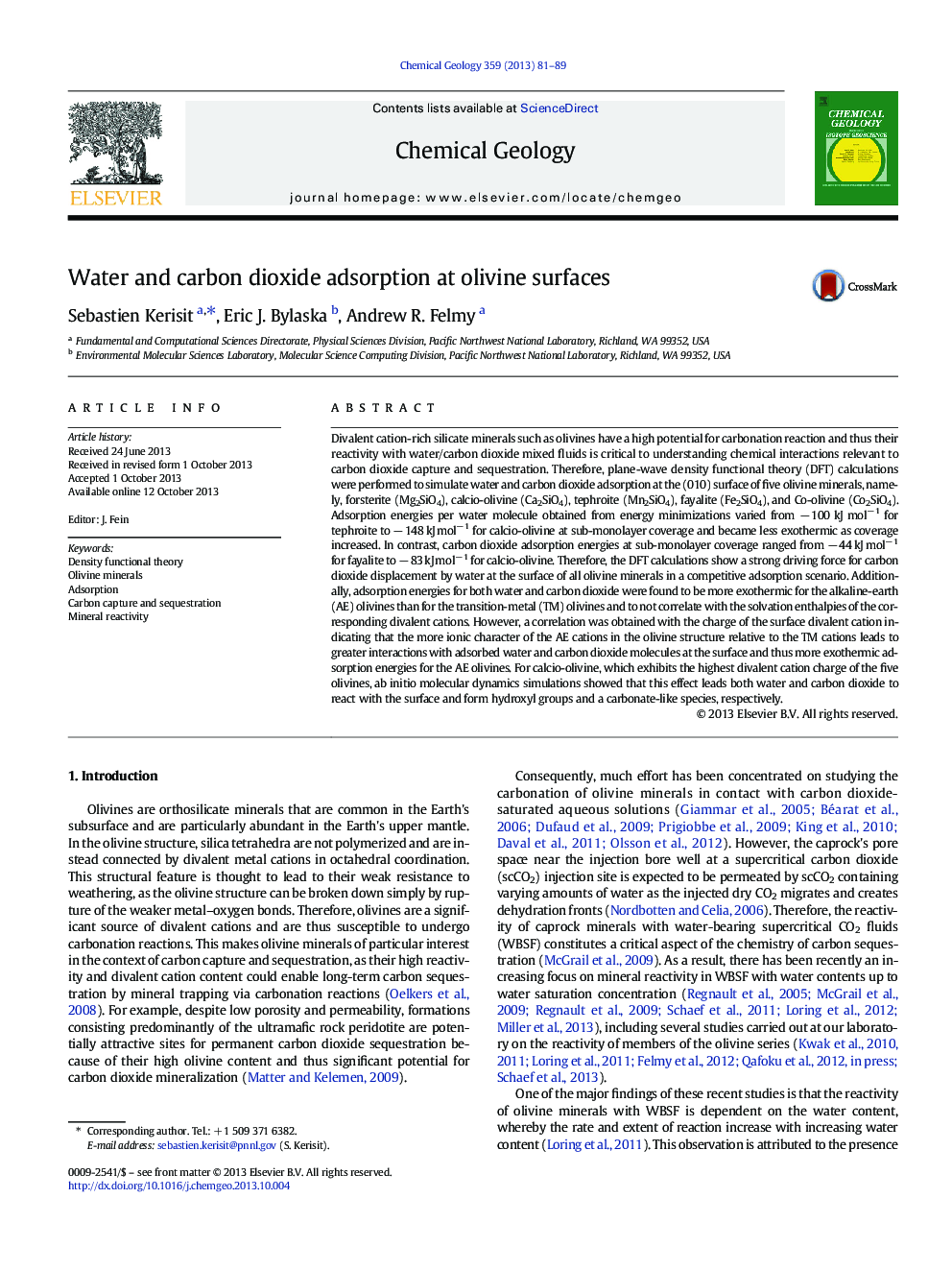| کد مقاله | کد نشریه | سال انتشار | مقاله انگلیسی | نسخه تمام متن |
|---|---|---|---|---|
| 4698916 | 1637610 | 2013 | 9 صفحه PDF | دانلود رایگان |
• Adsorption energies were calculated for H2O and CO2 at surfaces of 5 olivines.
• H2O adsorption is significantly more exothermic than CO2 adsorption.
• Adsorption is more exothermic for alkaline-earth than transition-metal olivines.
• Adsorption energies are correlated to cation charge, not solvation enthalpies.
• Dissociative H2O adsorption is preferred only at the calcio-olivine surface.
Divalent cation-rich silicate minerals such as olivines have a high potential for carbonation reaction and thus their reactivity with water/carbon dioxide mixed fluids is critical to understanding chemical interactions relevant to carbon dioxide capture and sequestration. Therefore, plane-wave density functional theory (DFT) calculations were performed to simulate water and carbon dioxide adsorption at the (010) surface of five olivine minerals, namely, forsterite (Mg2SiO4), calcio-olivine (Ca2SiO4), tephroite (Mn2SiO4), fayalite (Fe2SiO4), and Co-olivine (Co2SiO4). Adsorption energies per water molecule obtained from energy minimizations varied from − 100 kJ mol− 1 for tephroite to − 148 kJ mol− 1 for calcio-olivine at sub-monolayer coverage and became less exothermic as coverage increased. In contrast, carbon dioxide adsorption energies at sub-monolayer coverage ranged from − 44 kJ mol− 1 for fayalite to − 83 kJ mol− 1 for calcio-olivine. Therefore, the DFT calculations show a strong driving force for carbon dioxide displacement by water at the surface of all olivine minerals in a competitive adsorption scenario. Additionally, adsorption energies for both water and carbon dioxide were found to be more exothermic for the alkaline-earth (AE) olivines than for the transition-metal (TM) olivines and to not correlate with the solvation enthalpies of the corresponding divalent cations. However, a correlation was obtained with the charge of the surface divalent cation indicating that the more ionic character of the AE cations in the olivine structure relative to the TM cations leads to greater interactions with adsorbed water and carbon dioxide molecules at the surface and thus more exothermic adsorption energies for the AE olivines. For calcio-olivine, which exhibits the highest divalent cation charge of the five olivines, ab initio molecular dynamics simulations showed that this effect leads both water and carbon dioxide to react with the surface and form hydroxyl groups and a carbonate-like species, respectively.
Journal: Chemical Geology - Volume 359, 14 November 2013, Pages 81–89
